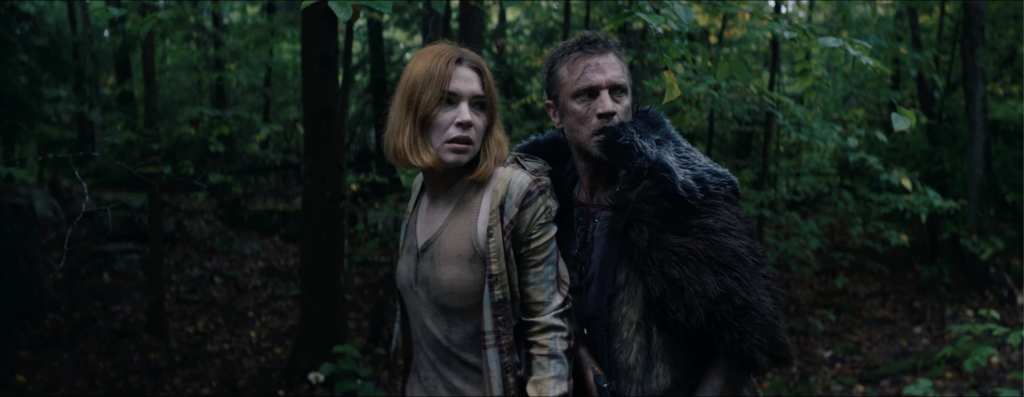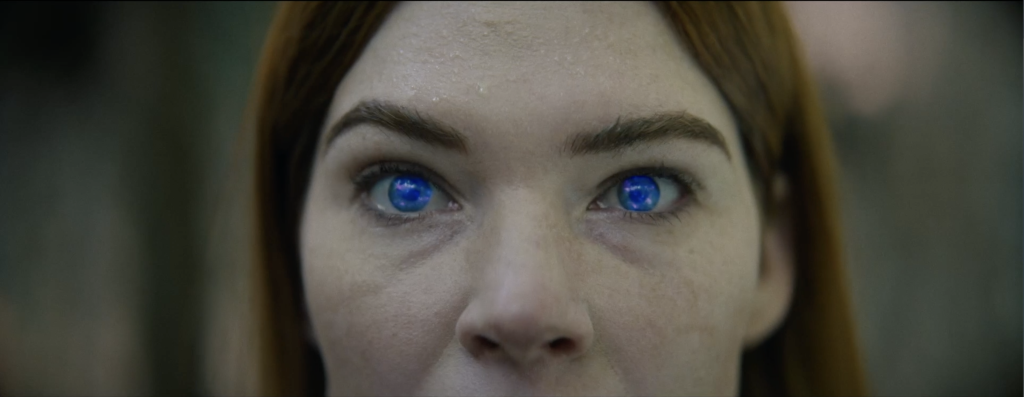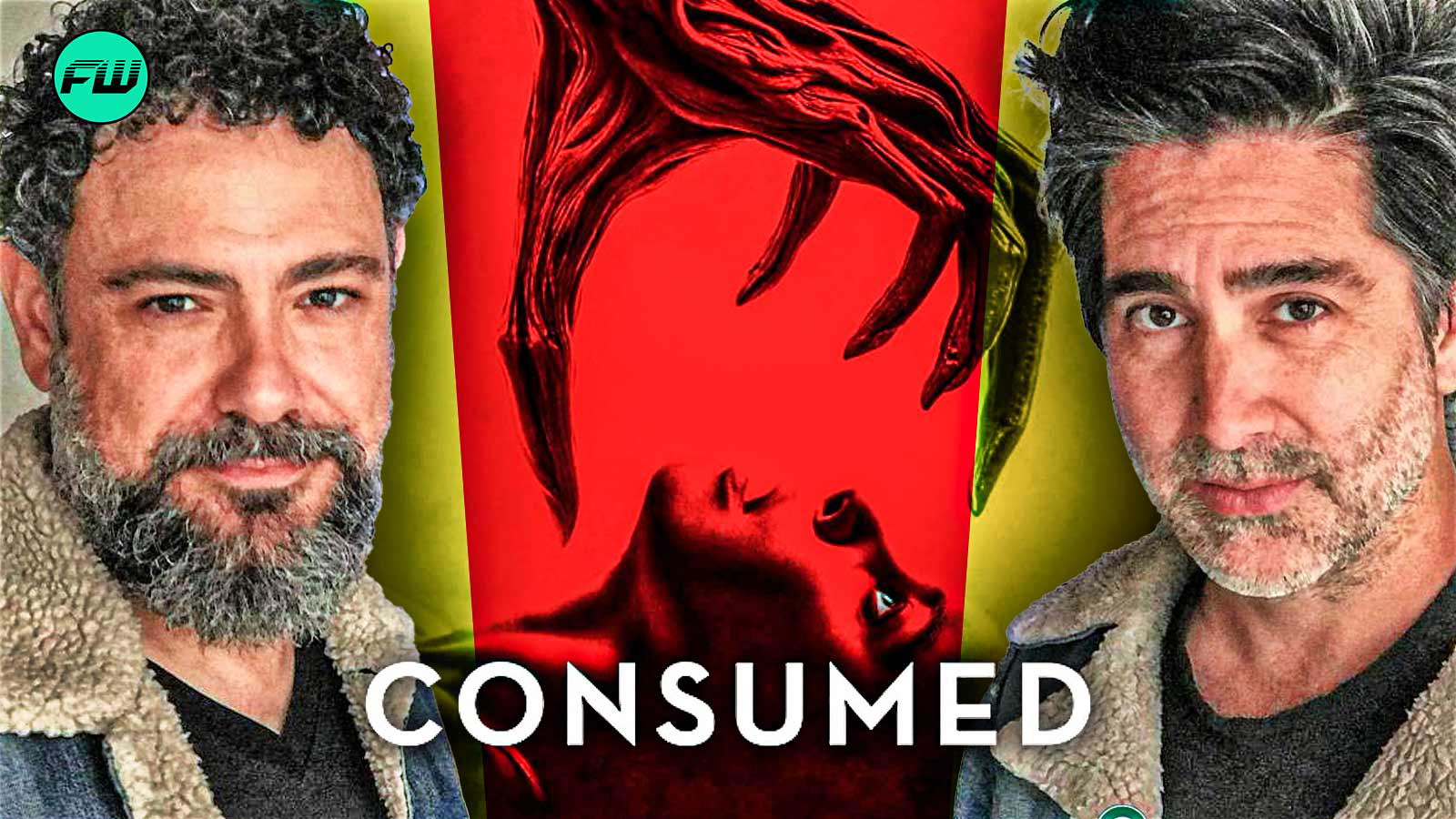Devon Sawa (Final Destination) is enough to pique horror fans’ interest in any indie project, especially if it comes from filmmakers known for making fun B-movies. Consumed, the latest film by The Butcher Brothers — the nickname for the filmmaking duo of director Mitchell Altieri and producer Phil Flores — follows a couple who gets stranded in the woods with a madman and a skin-stealing monster.
We at FandomWire got to speak with The Butcher Brothers about their latest horror effort, shooting in the woods, and why horror films like Consumed need a strong emotional through-line. Check out the interview below.
Consumed Interview
FandomWire: Folklore is a common source of inspiration for many horror movies, including Consumed. What do you think makes these stories lend themselves so well to the genre?
Mitchell Altieri: That’s a great question. For me, and I’m sure for Phil, you grow up with all these legends and myths and everything. How cool is it to then grow up and decide to tackle that? You know, there’s obviously some folklore that’s really popular or more seen in commercial films and television shows, and then for us, like the Wendigo folklore, it’s not as touched upon. I feel like it’s kind of fun to tackle those things and look at stories like that.
Phil Flores: I think it’s what Mitch is saying. It’s the underlying turbulence of folklore that — definitely with the Wendigo — it’s interwoven into the fabric of storytelling. So it’s fun to kind of raise that into a seemingly normal story of a couple going on a camping trip and then bring out their worst fears through this creature. And I think great folklore does that in any space.

FW: Although the Wendigo is a very well-known folk tale, I can’t think of many prominent examples of Wendigo horror. There’s Fessenden’s film, Scott Cooper’s Antlers, and now Consumed, of course. Why do you think filmmakers haven’t gone to this well more often?
Altieri: I can say, when the script came to us, you can tell — the Wendigo lore and all of it, it’s a complex topic and creature. And the writer, David Calvert, I think the reason why the Wendigo was the world that he wanted to get into was because the story is really about cancer and the inner fight, this disease that eats you from the inside out.
So I think the Wendigo was the one thing that really represented that. That’s the story he wanted to tell because of a personal bout his mother was having. So here’s this creature that cannibalizes but also possesses you, and the comparison to the Wendigo and cancer was very, very similar and parallel.
So, I think that’s what made this story so interesting. When we read it, we were like, “Okay, wait a minute, this isn’t really a creature feature per sé. It’s this woman’s fight against cancer.” So we decided to take this more off-beat approach with it.
FW: You mention that, and I think something that stands out about Consumed is its clear emotional through-line. Why do you think it’s important for horror films to have these elements?
Flores: Well, with any good storytelling, you have to feel. Sometimes, you’re there just to eat your popcorn and enjoy whatever’s happening — it’s a splatter fest, it’s a sport. But if we want to connect with an audience and actually make them think afterward and tug on their heart, that emotional storyline is important. Like Mitch said, this metaphor for cancer was pretty cool that it came through this embodiment of a Wendigo. So, it made sense for that creature to be coupled with the story.
Altieri: And just to add to that, I think every film and screenplay, you know what it’s going to be. Some films are just fun. You want to have a good time. Like Phil said, a popcorn kind of style. And then there are films that sometimes you need a deeper subtext of the story. And that’s how we wanted to approach Consumed.
We took it in that way where you still have the thrills, the action, the fun idea of this couple being hunted down, and then you throw in some Devon Sawa to add to that craziness. But at the heart of it, it really is this intense, dramatic piece of this battle where, at the end of the day, if you strip everything down, it’s just this woman’s fight against cancer.

FW: To pivot to the execution of the film, given the nature of the Wendigo myth, Consumed needed to be set in a wooded area. But what were the challenges in making this setting seem vast and intimidating yet eerily claustrophobic?
Altieri: That goes to say for the entire cast and crew as well.
Flores: I mean, every film is a challenge, right? Every film’s a firefight. I’ll just say, from my perspective, having to watch Mitch direct and Devon and Courtney, who are thoroughly professional and wonderful, covered in mosquito nets — which could be a creature of their own. You had waves of mosquitoes, we were living in carpets of them. It was so intense that people were literally in body suits.
But the idea of wilderness, because the story takes place in the wilderness, and then there’s a kind of meta experience where all the crew is in the wilderness as well. We were shooting in this place called Wawayanda State Park, which is a vast forest with brown bears scuttling by. You’re stuck in this space where you’re trying to navigate through it all and not get lost. And I think that’s a metaphor for what’s happening in the story as well. If you stray off for 10 feet, you could be lost, and then it’s a claustrophobic experience. “I’m alone. Where am I? Are there bears out here? Is there a Wendigo out here? I’m not sure.”
Altieri: I think with our characters, when you go into something like cancer, you’re walking into the unknown, kind of like being in the wilderness. But there’s this beauty, this comforting thing, yet it can kill you at any second.
And Phil and I, we started our careers doing indie films, and went on to do studio stuff, then came back to do indie films. And the whole idea of “go out and shoot in the woods, that’s where you start”… it’s the hardest thing. When the sun goes down, there’s just no light. It’s not like you get a streetlight or “let’s move fast and just steal this.” You’re just in pitch black, lugging everything out.
I was like, “Wait, how did people start this idea of ‘oh, just go shoot in the woods for your first indie,’” And this wasn’t our first movie. We’ve done it a long time; we just had never really gone out into the woods that deep. It was an experience.
Flores: And you’re hearing growling from somewhere. You’re not sure if it’s the grips or what it is.

FW: I also think Consumed offers a very good blend of surreal, trippy, psychological horror moments with more traditionally “scary” pieces. Why did you want to strike this balance?
Altieri: That’s something we really wanted to balance as carefully as we possibly could. Because again, as we were saying before, you want to have it where you watch it and you have a fun ride. So there can be somebody watching it, going, “I just want to see a good old horror movie creature feature.” But I think if you really sit down and lock into the movie and start putting those pieces together, you can really understand what this movie is about.
You could almost look back and say, “Is this even happening? In this movie that is based on suffering, with somebody dealing with the disease, or Devon’s character dealing with loss, is he even seeing the same thing that she’s seeing? In this world, is this Wendigo a completely different creature and it’s just his metaphor for loss?”
But again, we also want you to be like, “Hey, I’ve just had a long day at work, and I just want to throw on a horror movie,” and you can still have a fun ride because it still has the make up of a creature feature.
Consumed is now in theaters and on VOD.
Follow us for more entertainment coverage on Facebook, Twitter, Instagram, and YouTube.





